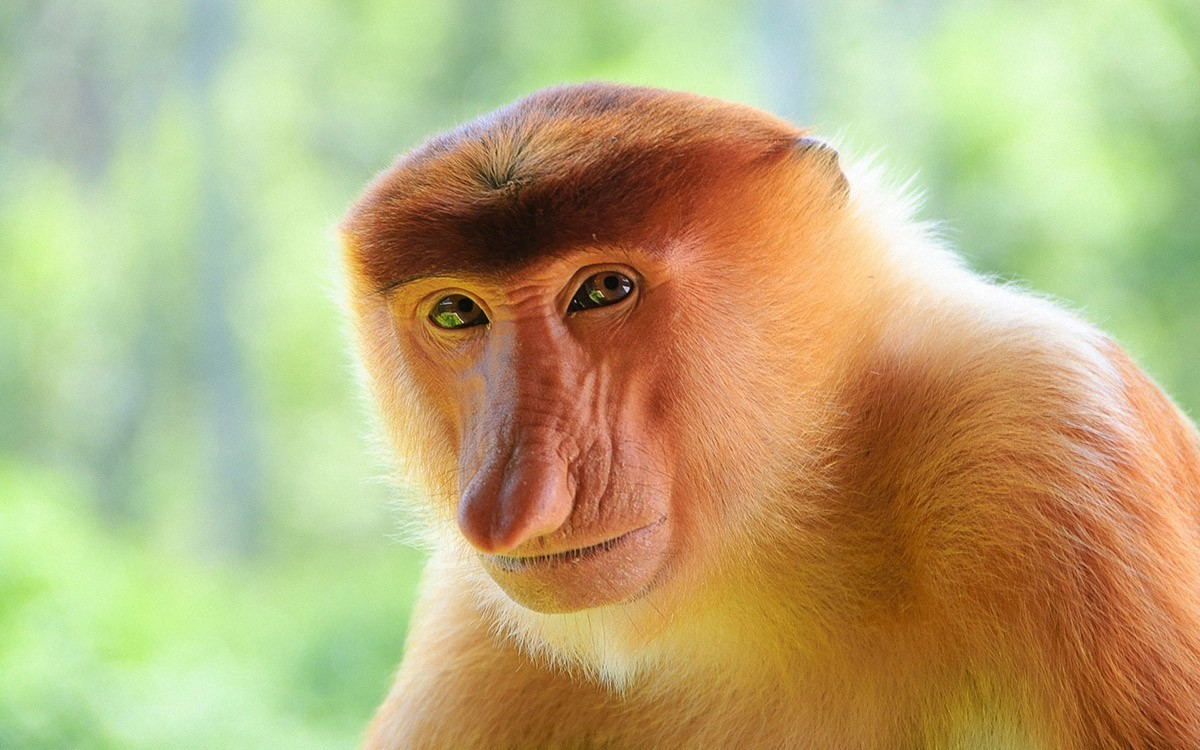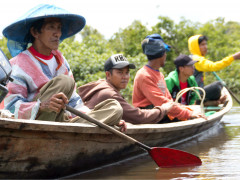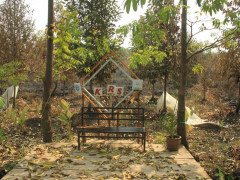Last Traces of Orangutan in the Kalibandung Peat Forest
By Aries MunandarPandanus and Proboscis Monkeys
Diverse flora and fauna live in peatlands, contributing to the balance of peat ecosystems. One of the plants that grows in peatland and is useful for animals is rasau or pandanus (pandanus helicopus). Pandanus is a species that usually grows along riverbanks and lakes in peat swamps. It can be found in Sumatra, Kalimantan, the Malay Peninsula, and as far as Thailand.
Pandanus grows well in swamp areas with dark and odorless water. It buds to reproduce and grows so densely that it can reach six meters in height. The plant has multiple fronds, which meet at the tip of the stem in three rows; the leaves are dark green, and usually have a yellowish or reddish base and white bottom.
Although it can potentially be a parasitic plant that obstructs water flows, pandanus has benefits for humans and other animals.
Pandanus can be utilized in mat weaving, creating livelihoods for local residents. In addition to this economic benefit, research conducted by Bogor Agricultural University indicates that pandanus could have antibacterial properties. Even though pandanus has not been optimally utilized, its most substantial contribution to the peat ecosystem is that it provides a food source for proboscis monkeys.
All proboscis monkeys (nasalis larvatus) have red-brown hair, while only males have a bulbous nose. They can reach 75 cm tall and weigh up to 24 kg. These bushy monkeys live in mangrove forests, swamps, and coastal forests in Kalimantan, Sabah, Serawak, and Brunei, and are characterized by their protruding stomachs. The uniqueness of the proboscis monkey makes it the mascot of the South Kalimantan province.
Proboscis monkeys live in groups of 10-32 with two distinct social systems. One system consists of one male proboscis monkey with a few adult females and children. The other is an all-male system with only juvenile monkeys.
The 2015 forest and land fires contributed to the ongoing destruction of the proboscis monkeys’ habitat. The fire burnt down many trees that served as a food source for this animal. Pandanus plants along the riverbanks have since become an alternative food source for proboscis monkeys. Pandanus continues to grow despite being removed and destroyed by the proboscis monkeys.
In the peat ecosystem, proboscis monkeys regulate forest density by eating leaves and plant buds, including dense pandanus growth. Additionally, the proboscis monkey could be leveraged to develop community-based ecotourism, providing economic benefits to local communities.
The decline of the proboscis monkey population has also impacted in the decreasing quality of wetlands and population of clouded leopards in Kalimantan. This shows that the presence of proboscis monkeys is indicative of healthy forests in Kalimantan.
Peat protection and restoration impact not just the land itself, but also the flora, fauna, and human communities living in peatland areas. For this reason, we should preserve peat ecosystems!





